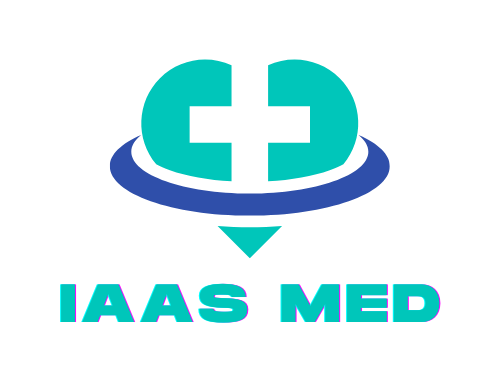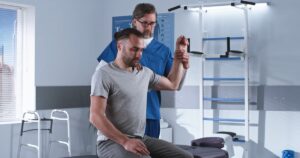If you’re looking to move into an advanced clinical role in healthcare but are not sure whether to become a Nurse Practitioner (NP) or a Physician Assistant (PA), you’re not alone.
These two careers are among the fastest-growing and most in-demand medical professions in the U.S., both offering strong salaries, job security, and the ability to diagnose and treat patients.
But while they may seem similar at a glance, the paths to becoming an NP or a PA – and what your day-to-day work looks like – are quite different.
So what’s the short answer? If you are already a nurse or value holistic, patient-centered care with the option to work independently in primary care, becoming a Nurse Practitioner might suit you best.
On the other hand, if you are looking for a generalist medical role with more flexibility to change specialties, the Physician Assistant path may be the better fit, especially for those interested in surgical or hospital-based care.
NP vs PA: Side-by-Side Comparison Table

| Feature | Nurse Practitioner (NP) | Physician Assistant (PA) |
| Education Path | RN → BSN → MSN or DNP | Bachelor’s → PA Master’s Program |
| Clinical Hours (Training) | ~500–1,000 supervised hours | ~2,000 supervised hours |
| Philosophy | Nursing model (patient-centered) | Medical model (disease-centered) |
| Autonomy (in many states) | May practice independently | Usually under MD supervision |
| Specialization | Specializing in the tart (e.g., FNP, AGNP) | Generalist training (can specialize later) |
| Time to Practice | 6–8 years total | 6–7 years total |
| Typical Workplaces | Clinics, primary care, psych, women’s health | Hospitals, surgery, a nd emergency medicine |
| Median Salary (2024 est.) | $124,000–$140,000/year | $120,000–$135,000/year |
| Job Growth (2023–2033, est.) | 45% | 27% |
| State Restrictions | Varies – some have full practice authority | Varies – often more tied to MD supervision |
Education Path and Certification Differences

Both careers require a graduate degree, but the educational models and philosophies differ. NPs follow a nursing-based model, while PAs follow a medical school-style model.
| Feature | Nurse Practitioner (NP) | Physician Assistant (PA) |
| Education Path | RN → BSN → MSN/DNP (or direct-entry MSN) | Bachelor’s → PA Master’s Program |
| Training Model | Nursing model (holistic, patient-focused) | Medical model (disease/pathology-focused) |
| Clinical Hours | Typically 500–1000+ hours | About 2,000 supervised hours |
| Licensing Exam | National board exam (e.g., AANP, ANCC) | PANCE (Physician Assistant National Certifying Exam) |
| Time to Practice (Post-High School) | 6–8 years | 6–8 years |
For nurses, online education options have made it easier than ever to advance.
Online MSN programs now allow RNs to specialize in areas like Family Practice or Psychiatric Mental Health without leaving their jobs – an important advantage for working professionals.
Meanwhile, PA programs are more rigid and mostly full-time and in-person due to their clinical demands.
Scope of Practice: Autonomy and Flexibility

State laws govern both NP and PA practice authority, and the rules vary widely.
- Nurse Practitioners have full practice authority in over 25 U.S. states, meaning they can diagnose, treat, and prescribe medications without physician oversight. They often run their practices, especially in rural or primary care settings.
- Physician Assistants typically work under the supervision of a physician, although many function with considerable autonomy in daily practice. Some states are moving toward greater independence for PAs, but formal supervision is still required in many places.
If long-term autonomy and the ability to practice independently appeal to you, NP might be the better route, especially if you want to open your clinic.
Specialization and Daily Work
Nurse Practitioners choose a specialty before entering advanced training. For example:
- FNP (Family Nurse Practitioner) – the most common, offers general primary care.
- PMHNP – psychiatric mental health nurse practitioner.
- AGACNP – adult-gerontology acute care.
Physician Assistants receive broad, generalist medical training, then specialize on the job. A PA might start in cardiology, switch to orthopedics, and later move to dermatology, without retraining. This flexibility is a big draw for many.
In terms of daily work, both roles do charting, exams, diagnosis, treatment plans, and patient education. The setting often determines the focus – for example:
- In a primary care clinic, both NP and PA roles may look nearly identical.
- In a surgical setting, PAs often assist in the OR, while NPs are more likely to manage pre-op and post-op care.
Salary and Job Outlook

As of 2024, both careers are in high demand, with excellent compensation.
- Nurse Practitioners earn a median salary of $124K–$140K, with top earners in specialties like psychiatry or acute care reaching $150K+.
- Physician Assistants earn around $120K–$135K, with surgical specialties and emergency medicine pushing that higher.
Both jobs are growing fast – but NP growth (estimated at 45% over the next decade) is outpacing PA growth (27%) due to the increasing need for primary care in rural and underserved areas.
Real-World Examples
Maya, 34, NP in rural Colorado:
“I used to be a med-surg RN, but I wanted more autonomy. I became a Family Nurse Practitioner and now run a small clinic where I’m the primary provider. I manage chronic illnesses, prescribe meds, and make referrals as needed. I love the long-term relationships I build with my patients.”
Luis, 29, PA in an urban trauma center:
“PA school was intense, but I love the variety. I work in the ER now, but I did rotations in ortho and cardio. I can switch specialties later if I want – that’s why I chose PA over med school. I work with great physicians, but I still make decisions every day.”
Pros and Cons at a Glance
| Career Path | Pros | Cons |
| Nurse Practitioner | More autonomy in many states, specialized, strong in primary care | Less flexible if you want to change specialties later |
| Physician Assistant | Flexible specialty switching, strong hospital roles | Less independent in many states, no ownership of practice |
Final Take: Which One Should You Choose?
- Choose NP if: You come from a nursing background, value holistic care, want long-term autonomy, or see yourself running a clinic.
- Choose PA if: You prefer a broad medical approach, want flexibility to move across specialties, or enjoy fast-paced, team-based care in hospitals.
There is no “better” role – only a better fit for your interests, skills, and career goals.
Related Posts:
- How to Choose the Right Healthcare Career Path - 17…
- Outpatient Surgery vs. Inpatient Care: Which Is…
- Which Is Better - Laparoscopic or Robotic Surgery?
- How to Choose the Right Ophthalmologist - Ultimate…
- Massage vs Chiropractic - Making the Right Choice
- Unlock Your Potential: 6 Steps to Start Your Career…















